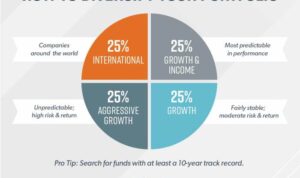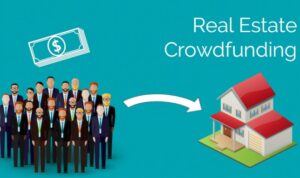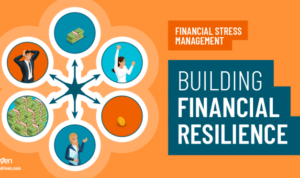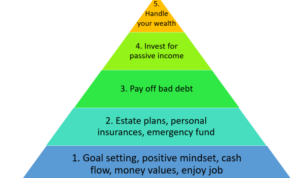Get ready to dive deep into the world of personal loans with our guide that will leave you informed and empowered. Whether you’re a rookie or a seasoned borrower, this is the ultimate crash course you don’t want to miss.
Let’s break down the different types of personal loans, unravel the mysteries of interest rates, explore repayment terms, and master the art of applying for a personal loan like a pro.
Types of Personal Loans
When it comes to personal loans, there are different types to choose from based on your financial needs and situation. Here are the main types of personal loans you might encounter:
Secured Personal Loans
Secured personal loans are backed by collateral, such as your home or car. These loans typically come with lower interest rates since the lender has a guarantee in case you default on the loan. Secured personal loans are suitable for large expenses like home renovations or purchasing a vehicle.
Unsecured Personal Loans
Unsecured personal loans do not require any collateral. These loans are based solely on your creditworthiness, and they often come with higher interest rates compared to secured loans. Unsecured personal loans are ideal for smaller expenses like medical bills or debt consolidation.
Fixed-Rate Personal Loans
Fixed-rate personal loans have a set interest rate that remains the same throughout the loan term. This type of loan provides predictability in your monthly payments, making it easier to budget. Fixed-rate personal loans are a good choice for those who prefer stability and want to avoid fluctuations in interest rates.
Variable-Rate Personal Loans
Variable-rate personal loans have an interest rate that can change periodically based on market conditions. While the initial rate may be lower than a fixed-rate loan, there is a risk that your payments could increase if interest rates rise. Variable-rate personal loans are suitable for borrowers who are comfortable with some level of uncertainty and are willing to take on the risk of fluctuating rates.
Personal Loans vs. Credit Cards vs. Payday Loans
Personal loans differ from credit cards and payday loans in several ways. Personal loans typically offer lower interest rates compared to credit cards, making them a more affordable option for borrowing larger sums of money. Payday loans, on the other hand, come with extremely high-interest rates and short repayment terms, making them a last resort for emergency situations. When deciding between personal loans, credit cards, and payday loans, consider your financial needs, repayment ability, and the cost of borrowing.
Understanding Interest Rates
Interest rates play a crucial role in determining the cost of borrowing money through personal loans. They represent the percentage of the loan amount that lenders charge borrowers for the privilege of borrowing money.
When it comes to personal loans, there are two main types of interest rates: fixed and variable. Let’s explore the differences between the two:
Fixed Interest Rates
Fixed interest rates remain the same throughout the life of the loan. This means that the monthly payment amount stays consistent, providing predictability and stability for borrowers. It is ideal for those who prefer to know exactly how much they need to pay each month.
Variable Interest Rates
Variable interest rates, on the other hand, fluctuate based on market conditions. This means that your monthly payments can vary, making it harder to budget for the loan. However, variable rates can sometimes be lower than fixed rates initially, offering potential savings if interest rates decrease.
Impact of Credit Scores
Credit scores play a significant role in determining the interest rates offered on personal loans. Lenders use credit scores to assess the risk of lending money to an individual. A higher credit score typically results in lower interest rates, as it indicates a lower risk of default. On the other hand, a lower credit score may lead to higher interest rates or even rejection of the loan application.
In conclusion, understanding interest rates is essential when considering personal loans. Whether you opt for a fixed or variable rate, and whether you have excellent or poor credit, the interest rate you secure will significantly impact the overall cost of borrowing. Make sure to shop around and compare offers to find the best rate suited to your financial situation.
Loan Repayment Terms
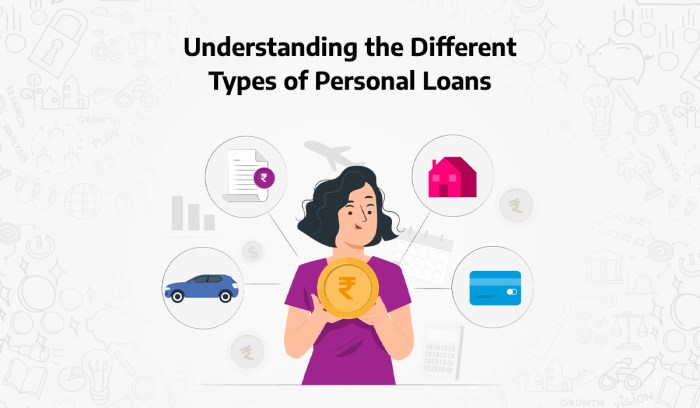
When it comes to personal loans, understanding the repayment terms is crucial to managing your finances effectively. Let’s dive into the common repayment terms, the implications of choosing a shorter or longer loan term, and some tips to stay on top of your repayments.
Common Repayment Terms
- Monthly Payments: Most personal loans require monthly payments, where you pay a fixed amount each month until the loan is fully repaid.
- Loan Duration: The loan duration refers to the length of time you have to repay the loan, typically ranging from one to seven years.
Implications of Loan Term
- Shorter Loan Term: Opting for a shorter loan term means higher monthly payments but lower overall interest costs. It can help you pay off the loan faster and save money on interest.
- Longer Loan Term: Choosing a longer loan term results in lower monthly payments but higher total interest costs. While it may reduce immediate financial strain, you end up paying more in interest over time.
Tips for Effective Loan Repayments
- Create a Budget: Make sure to budget for your loan payments each month to avoid missing any payments.
- Automate Payments: Set up automatic payments to ensure you never miss a due date and incur late fees.
- Pay Extra When Possible: If you have the means, consider making extra payments towards your loan principal to reduce interest costs and pay off the loan faster.
- Communicate with Lender: In case of financial difficulties, communicate with your lender to explore options like loan modification or deferment.
Applying for a Personal Loan
When it comes to applying for a personal loan, there are certain steps you need to follow to increase your chances of approval.
Typical Application Process
- Research and compare lenders to find the best fit for your needs.
- Fill out the loan application form with accurate information.
- Submit necessary documentation such as proof of income, identification, and employment details.
- Wait for the lender to review your application and make a decision.
- If approved, review the terms and conditions of the loan before accepting.
Documentation and Information Required
- Proof of income: Recent pay stubs, tax returns, or bank statements.
- Identification: Driver’s license, passport, or state ID.
- Employment details: Contact information for your employer and length of employment.
- Credit history: Your credit score and any existing debts or loans.
- Collateral (if applicable): Details of any assets you are willing to pledge as security for the loan.
Improving Chances of Approval
- Check your credit score and report for any errors or discrepancies.
- Pay off existing debts to improve your debt-to-income ratio.
- Provide accurate and up-to-date information on your application.
- Consider a co-signer with a strong credit history to increase your chances of approval.
- Shop around for the best terms and interest rates before applying.

